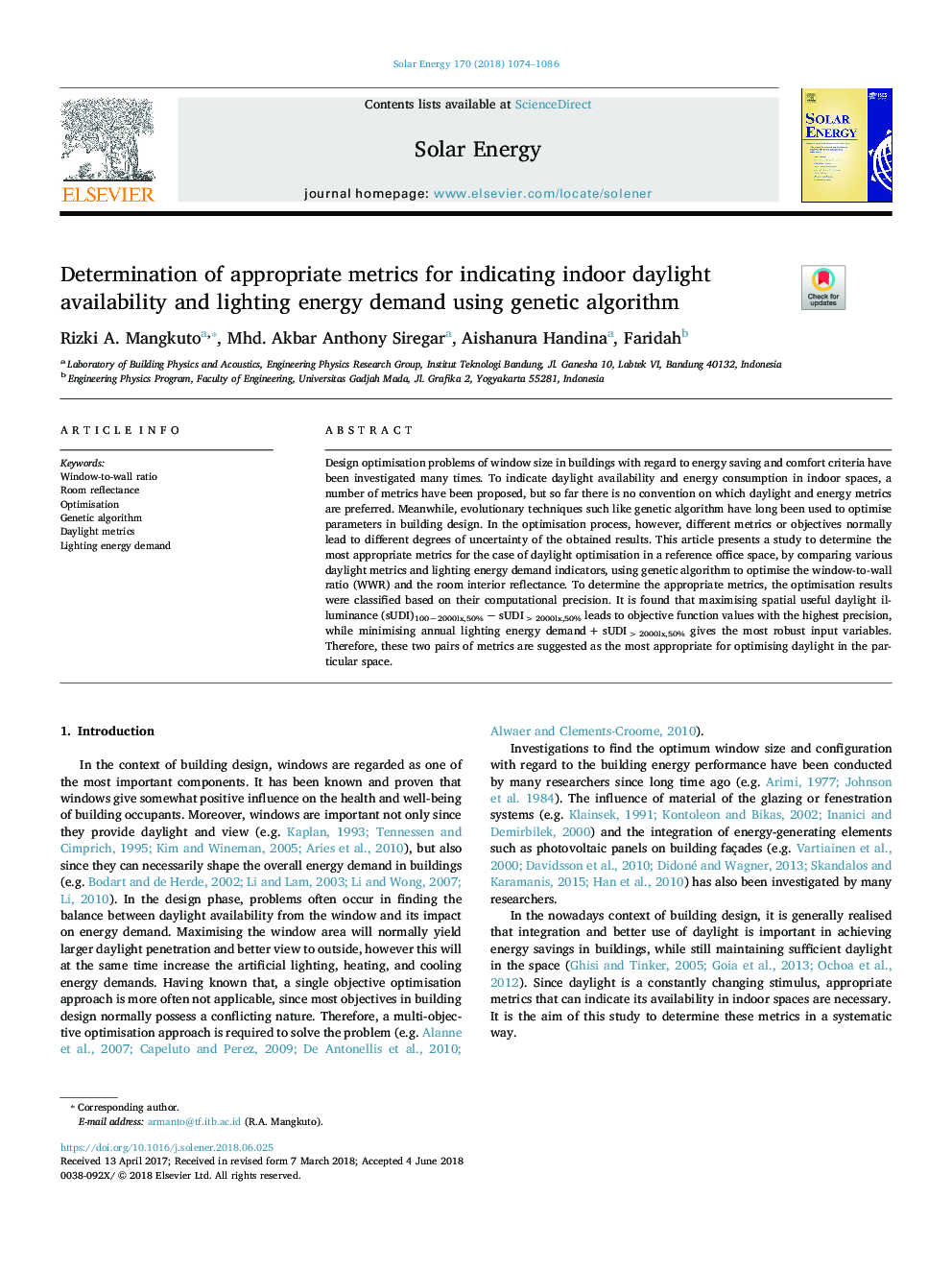| Article ID | Journal | Published Year | Pages | File Type |
|---|---|---|---|---|
| 7935167 | Solar Energy | 2018 | 13 Pages |
Abstract
Design optimisation problems of window size in buildings with regard to energy saving and comfort criteria have been investigated many times. To indicate daylight availability and energy consumption in indoor spaces, a number of metrics have been proposed, but so far there is no convention on which daylight and energy metrics are preferred. Meanwhile, evolutionary techniques such like genetic algorithm have long been used to optimise parameters in building design. In the optimisation process, however, different metrics or objectives normally lead to different degrees of uncertainty of the obtained results. This article presents a study to determine the most appropriate metrics for the case of daylight optimisation in a reference office space, by comparing various daylight metrics and lighting energy demand indicators, using genetic algorithm to optimise the window-to-wall ratio (WWR) and the room interior reflectance. To determine the appropriate metrics, the optimisation results were classified based on their computational precision. It is found that maximising spatial useful daylight illuminance (sUDI)100â¼2000lx,50%â¯ââ¯sUDI>2000lx,50% leads to objective function values with the highest precision, while minimising annual lighting energy demandâ¯+â¯sUDI>2000lx,50% gives the most robust input variables. Therefore, these two pairs of metrics are suggested as the most appropriate for optimising daylight in the particular space.
Related Topics
Physical Sciences and Engineering
Energy
Renewable Energy, Sustainability and the Environment
Authors
Rizki A. Mangkuto, Mhd. Akbar Anthony Siregar, Aishanura Handina, Faridah Faridah,
